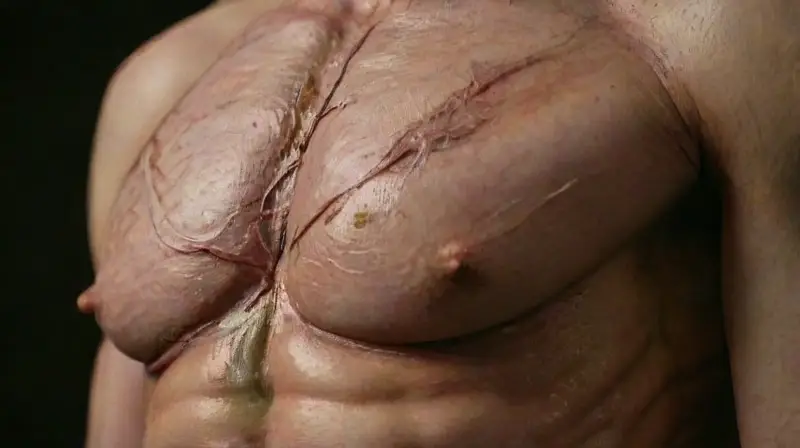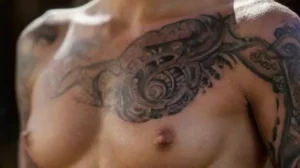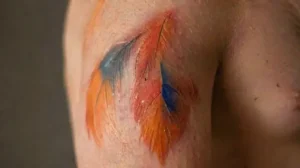Body art has long been a medium for artists to explore identity and challenge perceptions. Over the years, many styles and themes have emerged, each pushing boundaries and encouraging viewers to see the human form in new ways. Among these, anatomical surrealism stands out as a distinctive genre that combines realistic depictions of the body with imaginative, dream-like elements.
This style blurs the line between reality and fantasy, transforming the human body into a canvas for surreal narratives. Artists employ vivid imagery and meticulous craftsmanship to evoke emotional responses and provoke thought about the nature of the self. Through this approach, body art becomes not only a form of expression but also a powerful commentary on human existence.
The Origins of Anatomical Surrealism
Anatomical surrealism traces its roots to the early 20th century, influenced by the avant-garde movements that sought to defy conventional art. Artists like Salvador Dalí explored bizarre reimaginings of reality, which later influenced body art practices. The fascination with anatomy, coupled with surrealist ideas, laid the groundwork for this genre.
This artistic tradition grew through the efforts of body modification artists and tattooists who integrated surreal motifs into their work. Their goal was to create pieces that challenged viewers to rethink the relationship between body and mind. As techniques evolved, so did the complexity and depth of anatomical surrealist designs.
Throughout the decades, cultural shifts also played a role in the development of this style. Societal questions surrounding identity, gender, and mortality found expression in body art that combined anatomical precision with surrealist whimsy. This blend created a new visual language that continues to inspire contemporary artists.
Techniques in Anatomical Surrealism
Artists working in this genre often combine hyper-realistic painting techniques with imaginative elements. The goal is to render anatomical features with astonishing accuracy while infusing them with surreal tweaks. This contrast heightens the visual impact and invites viewers to ponder the meaning behind the artwork.
The use of vibrant colors and detailed shading contributes to the illusion of depth and realism. Simultaneously, unexpected objects or surreal distortions—such as melting organs or floating limbs—introduce a sense of fantasy. This duality is essential to creating a compelling anatomical surrealist piece.
Collaboration between surgeons, anatomists, and artists often enhances the authenticity of the work, allowing for precise depiction of human anatomy. It also allows for more innovative approaches to transformation, where the anatomical accuracy lends credibility to the surreal narrative.
Surreal Motifs and Symbolism

In anatomical surrealism, motifs such as organs, bones, and muscles are often transformed into symbolic elements. For example, a heart might be depicted as a blooming flower or an eye as a portal to another dimension. These symbolic choices deepen the meaning and emotional resonance of the artwork.
Themes of mortality, rebirth, and human vulnerability are recurrent in this genre. Surrealist symbols serve as gateways to exploring complex concepts about existence and the subconscious. Artists use these motifs to communicate hidden messages or invite viewers to interpret their own personal stories.
Additionally, surreal motifs challenge perceived boundaries—be they physical, emotional, or societal—encouraging a dialogue about fluidity and transformation. The recurring use of symbolic objects and surreal juxtapositions makes anatomical surrealism a rich field for exploration.
Body Modification and Performance Art
Many practitioners adopt body modification as a form of expression within this surrealist framework. Piercings, tattoos, and even surgical alterations are used to craft physical extensions of surreal motifs. These modifications serve not only as art but as statements about identity and self-creation.
Performance art is also prominent in this genre, where live body manipulation or temporary modifications create a dynamic experience. These performances often involve surreal elements, such as body painting or prosthetics, to evoke visceral reactions. The performative aspect blurs the line between art and experience.
This approach emphasizes the transformative potential of the human body. It becomes an active participant rather than just a passive canvas. Such practices challenge societal norms and stimulate ongoing dialogue about bodily autonomy and the nature of artistic expression.
Contemporary Artists and Influences

Several contemporary artists have pioneered new directions in anatomical surrealism. They draw inspiration from traditional surrealist masters, as well as modern digital techniques. Their work often combines painting, sculpture, and body art to create multi-dimensional installations.
Artists like Orlan and H.R. Giger have pushed boundaries with their visceral and surreal visuals. Their influence can be seen in the way modern practitioners embrace medical aesthetics combined with fantastical narratives. Their work continues to challenge viewers’ perceptions of the human form.
Emerging artists are experimenting with augmented reality, 3D printing, and bio-art to expand the possibilities of anatomical surrealism. This blend of old and new technologies fosters a dynamic and evolving field that keeps pushing artistic limits.
Ethical and Cultural Considerations
The practice of anatomical surrealism often raises ethical questions, especially when involving body alterations or medical technologies. Artists and practitioners must navigate issues surrounding consent, safety, and cultural sensitivities. Respecting individual agency is crucial in this provocative field.
Culturally, different societies interpret body modification and surreal imagery through diverse lenses. What is celebrated as art in one context may be seen as taboo or controversial in another. Understanding these differences is vital for engaging with the genre appropriately.
Finally, the political aspect cannot be overlooked. Anatomical surrealism frequently challenges taboo topics like mortality, the body, and societal norms. Its provocative nature serves as a critique and reflection of contemporary values and beliefs, making it a powerful form of cultural commentary.
Conclusion
Anatomical surrealism in body art is a captivating fusion of science and imagination, transforming the human form into a canvas of surreal narratives. Its intricate blend of realism and fantasy invites viewers to reconsider what they know about identity and the body.
Through innovative techniques and symbolic motifs, this genre continues to evolve, challenging societal norms and inspiring new generations of artists. As it pushes boundaries in both aesthetic and conceptual terms, anatomical surrealism remains a vital and provocative form of artistic expression.







